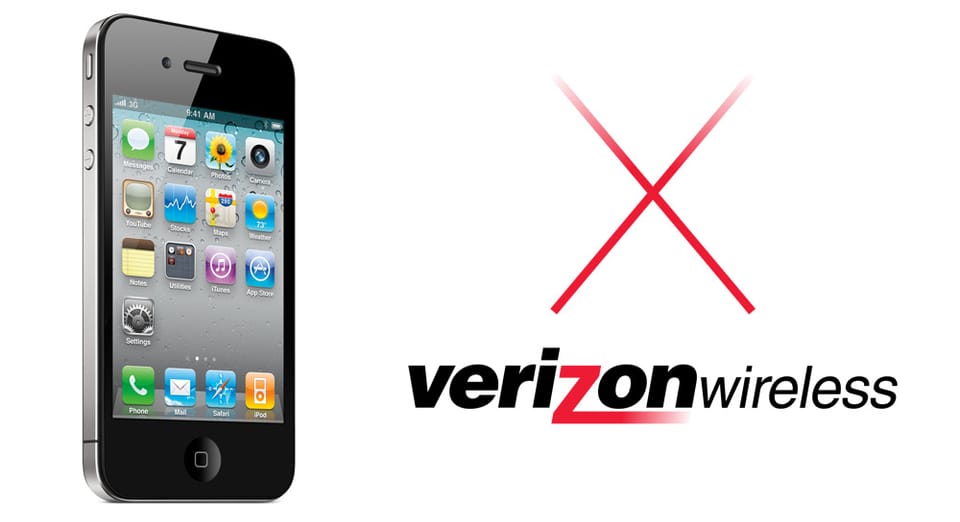5 Reasons Not To Buy The Verizon iPhone 4

Since Verizon Wireless announced that the iPhone 4 was heading to their network yesterday, the media went on a publishing spree. Just about every article mentions the advantages of switching from AT&T, but there are many things left unsaid. If you plan to buy your first iPhone 4 or switch networks for the same phone when it become available next month, here are somethings you should consider first.
1) The Verizon iPhone is old
Aside from the switch to CDMA, the Verizon iPhone 4 only has one new feature: an integrated mobile hotspot. The AT&T iPhone 4 doesn’t officially support this feature yet, but recent reports indicate that the next Apple iOS update will bring that feature to everyone. For those wondering, the mobile hotspot feature enables 5 WiFi enabled devices to get online through your iPhone’s internet connection. While a great addition, it isn’t unique to the iPhone 4. Just about every carrier from AT&T, Sprint, T-Mobile, and Verizon Wireless offer both dedicated hotspots and smart phones with the same feature.
2) A new iPhone is around the corner
Since the original iPhone first became available in 2007, Apple has introduced a new model each year for the past four years. Unless the company oddly deviates from their release cycle, a new iPhone should become available within the next five months. It is hard to tell whether it will be the iPhone 5 or merely upgrades to the existing model, but Apple will definitely announce something new.
The Verizon Wireless iPhone 4 is only a slightly tweaked iteration of the existing phone. If you buy one next month, you will get stuck with a last-generation model and a two-year contract. Leaving isn’t easy since early termination fees are generally expensive and Verizon Wireless doesn’t offer early upgrades like AT&T.
3) The Verizon iPhone is not 4G
While paying for a reliable network that can handle calls might be a major improvement for many, this phone doesn’t support 4G LTE. For those unfamiliar with the new network, it offers up to 12 Mbps download speeds and 5 Mbps upload speeds. Verizon’s own 3G network, in comparison, only reaches about 1.5 Mbps for downloads and 0.8 Mbps for uploads. While 4G coverage is still limited, nearly a third of the country has access to the new network after last month’s launch. Verizon announced four new 4G-enabled smart phones at CES 2011 which will be available in the coming months.
4) No simultaneous data and voice
AT&T’s GSM technology lets customers browse the web or other apps during a phone call. This makes looking for directions, checking an email, or other data-driven tasks possible while on a call. Unfortunately, the limitations of Verizon’s CDMA technology only allows one at time. Sure, you can do both at once if you are on WiFi, but if you are not at home or at work, you are out of luck. Having a 4G enabled device solves this problem because voice calls can go through 3G while data transfers occur on 4G.
5) The iPhone isn’t the best phone
Although this issue is still debatable to some, both the hardware and software capabilities of competition are major steps ahead. With phones such as the Droid Bionic and HTC Thunderbolt heading to Verizon Wireless, the iPhone 4 seems quite primitive. For instance, take a look at our infographics comparing the iPhone 4 to older devices such as the Samsung Epic 4G and Motorola Droid 2 or the even older HTC EVO 4G and Motorola Droid X.
The Bottom Line
If you are an Apple aficionado or absolutely need a feature that only the iPhone 4 offers, the Verizon model is an acceptable upgrade. If you already have an AT&T iPhone 4, you probably should wait until Apple launches the next iPhone model unless you are having major network issues. For the rest looking for a new smart phone or considering their first iPhone, check back soon for an in-depth infographic comparing the latest Verizon Wireless offerings.
Links: Apple.com | VerizonWireless.com